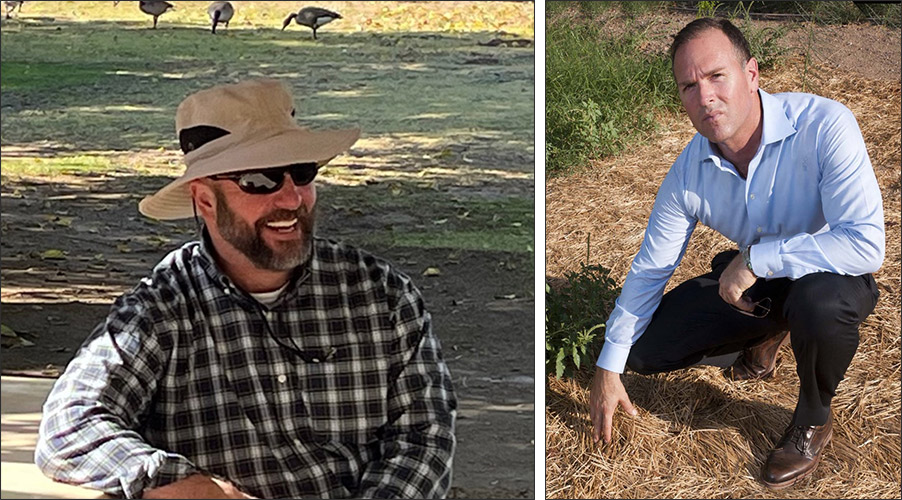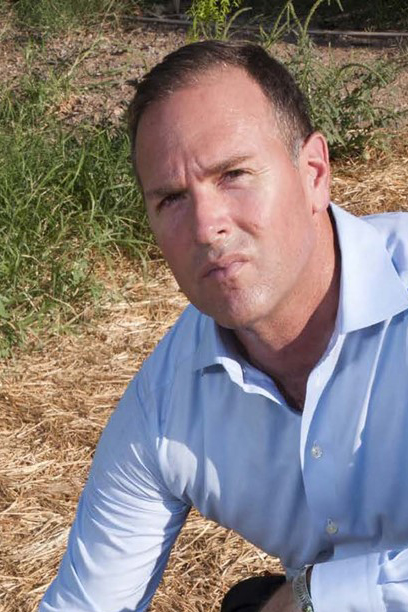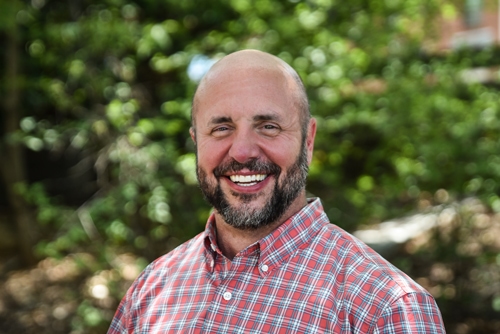Welcome to a new season of the EWN Podcast! Our guest has a bold vision for natural, holistic land management. He’s not just thinking about how water harvesting and land management can complement or even replace traditional water resources engineering, he’s putting it into practice. In Season 7, Episode 1, host Sarah Thorne is joined by cohost Jeff King, National Lead of the Engineering With Nature Program, and Ricardo Aguirre, Director of Land Management and Water Security for WEST Consultants (WEST) in Arizona and Executive Director of the Drylands Alliance for Addressing Water Needs (DAAWN).
Ricardo is an engineer, rancher, consultant, and an accredited holistic management professional and educator. He has 25 years of experience working on hydrology, stormwater management, flood control, and groundwater recharge. Ricardo grew up on a cattle ranch and cotton farm in southern Arizona. The farm failed, and his family urged him to get away from agriculture, but his mother sensed that water was going to be the future in the Southwest and recommended he become a water attorney. Instead, he chose civil engineering with a focus on water resources. Following graduation from the University of Arizona, he worked at the US Army Corps of Engineers (USACE) in the Construction Engineering Research Laboratory (CERL) while completing a master’s degree at the University of Illinois.
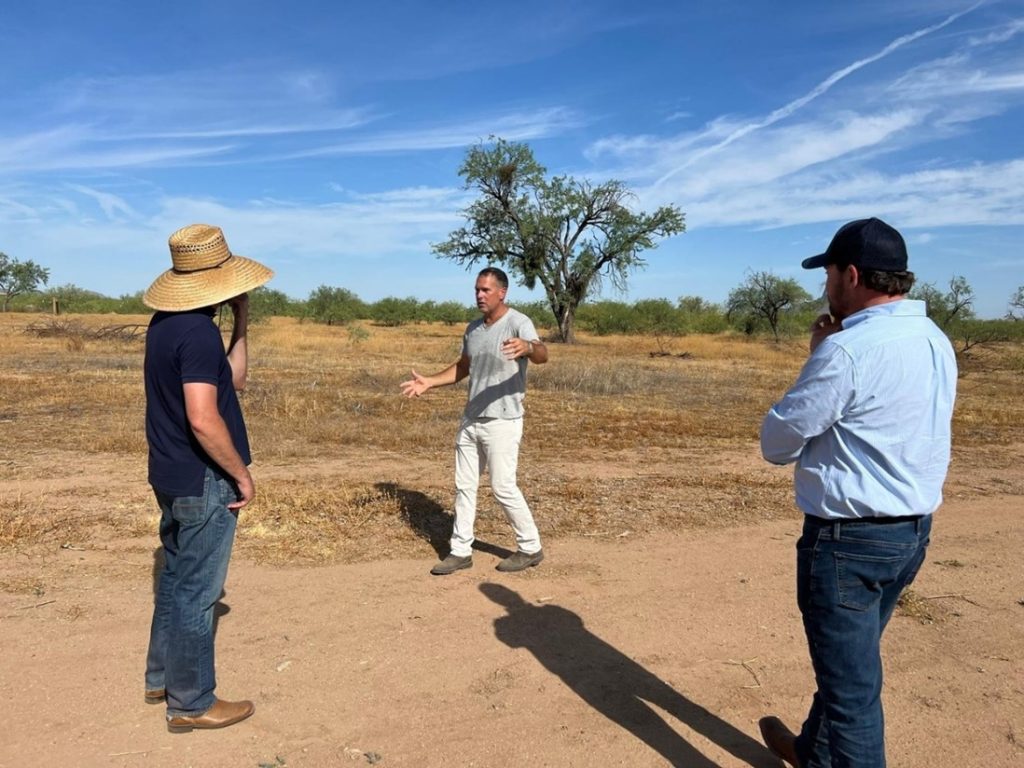
After working in land development, Ricardo’s career brought him back to his family’s lands but with new perspectives on land management and water use. He started his own firm, Holistic Engineering and Land Management, then joined WEST to pursue his vision for regenerative land management.
Regenerative land management, Ricardo explains, “is understanding nature’s patterns and working with nature to maintain landforms, specifically in this case, grasslands that do the yeoman’s work in the carbon and water cycles. Key to managing grasslands in an arid environment is understanding the natural balance between the geomorphology, the physical surface features; the hydrology, the movement of water in relation to the land; and ecology, the biodiverse community of species that uses the sun’s energy to manage and maintain a healthy functioning watershed.” One of the core principles in this system is the need for megafauna, large livestock such as sheep and cattle. Ricardo says that, “in temperate environments, megafauna prevent forests from moving in on grasslands; and in arid environments, megafauna prevent grasslands from becoming a desert. Megafauna support both the mineral cycle and the water cycle by supporting plants and microorganisms in the soil, which keeps the soils from collapsing and becoming compacted. This can lead to symptoms of desertification, such as dust storms; excess flooding; soil loss, wildfires; poor water, soil, and air quality; invasive species; and water scarcity.”
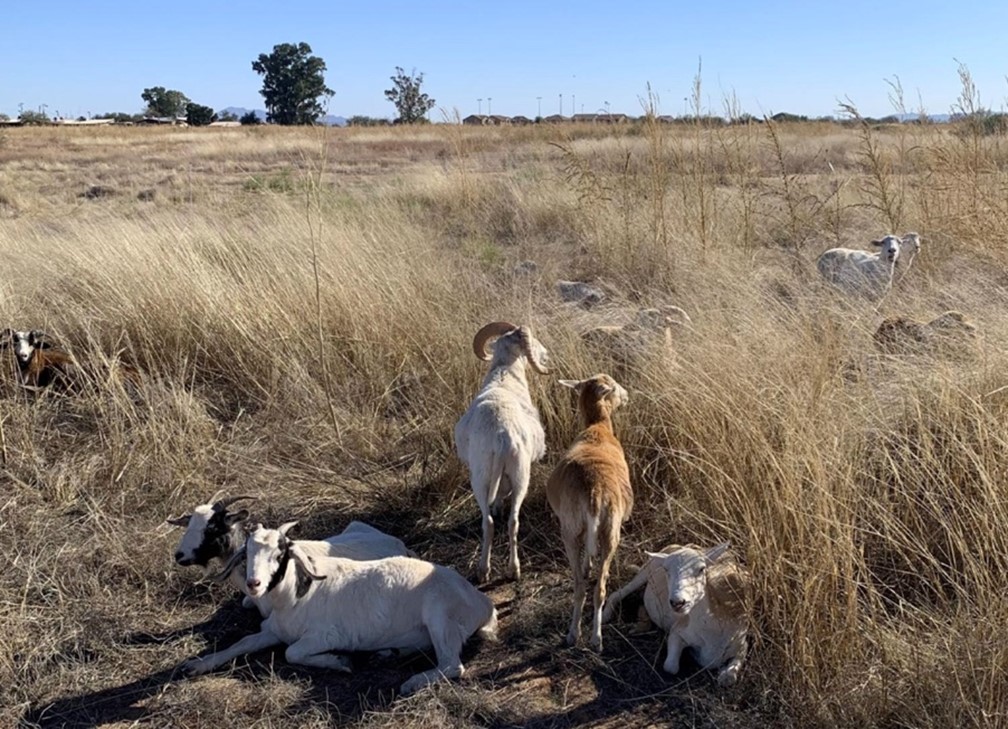
To better understand these relationships, Ricardo and WEST have created a demonstration site on land purchased by WEST that used to be part of Ricardo’s family’s ranch. They are conducting a project to compare the impact of conventional grazing—a small number of animals in a very large area for long periods of time (months to years, as shown to the left of the fence in the image below)—to high-density grazing—a larger number of animals in a very small area for very short periods of time (hours to days as shown to the right of fence in the image below). As Ricardo explains, this high-density grazing concentrates and evenly distributes the beneficial animal wastes and the trampling of plants back into the soil to feed beneficial soil organisms. The animals then don’t come back to this land until the space is ready to be grazed again. “We’ve used sheep, and they have performed very well. We’re very proud of the before and after pictures. Now we’re looking to make improvements, with perimeter fence and water lines, to bring in cattle to advance the ecological succession.”
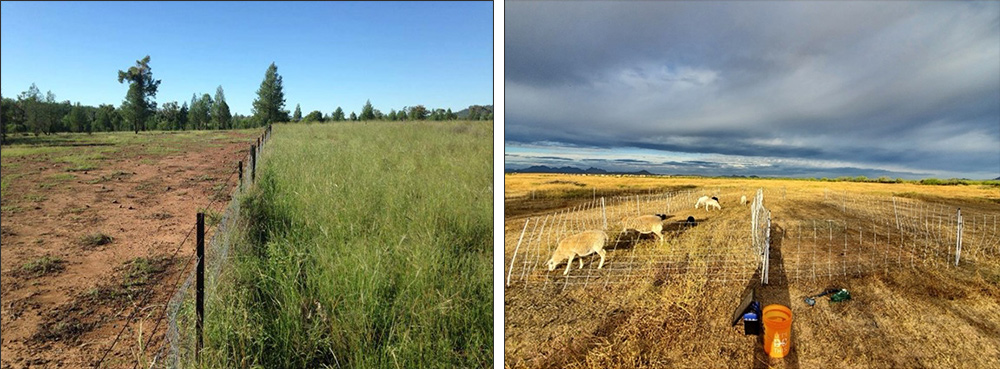
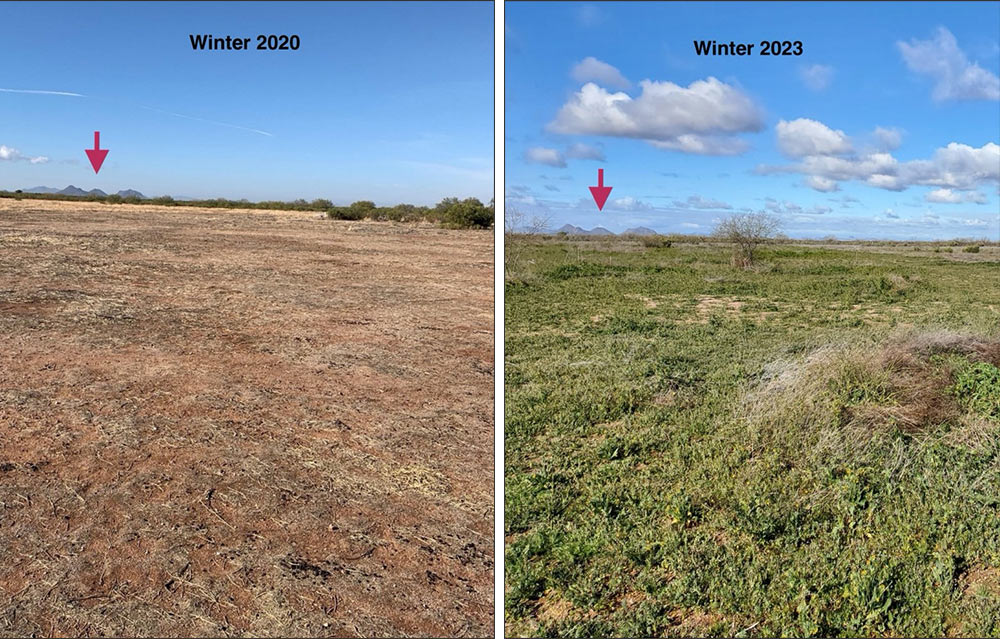
Consistent with EWN, Ricardo and WEST have designed their innovative approaches to produce multiple benefits. For example, by enhancing their planned grazing with other technologies, they hope to deliver effective flood control in a timeframe similar to traditional concrete and steel infrastructure. Ricardo believes the latter are only providing “symptomatic relief” rather than addressing the root of the problem. He describes a test project in Cochise County, Arizona: “We delivered a land plan that basically consisted of an internal electric fence to which we tethered a mobile fence, so the animals move around in a strip grazing pattern. The animals have been out there for a year. It is high density grazing, with the animals distributing dung and urine, while trampling the existing plant material that feeds soil organisms.”

Ricardo notes the effectiveness in terms of supporting soil health: “It really comes down to the relationship between soil organic matter and soil water-holding capacity. For every 1% increase in soil organic matter, the land can retain an additional 20,000 to 60,000 gallons of water per acre.” To quantify these metrics, Ricardo and other WEST engineers use complex two-dimensional surface water models to determine existing flow conditions for typical design storm events, such as the 100-year, 6-hour event. Then proposed target-condition models are created and compared to in-field monitoring. The results are used to help the client plan a truly nature-based approach that meets the objectives of a flood control project or helps mitigate other problems caused by desertification.
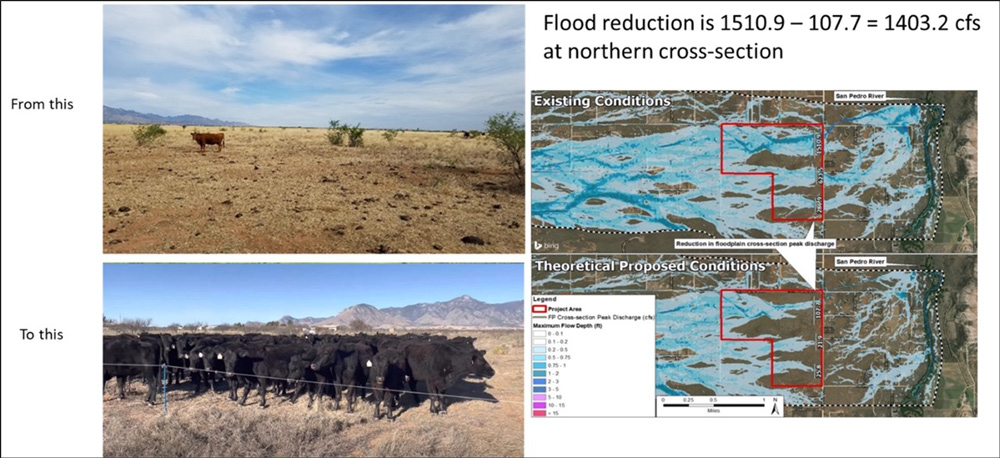
Ricardo is passionate about the high value of partnering with nature: “Compared to industrial thinking, the engine of economy is run off the labor force of humans. But when you partner with nature, you get a free googolplex of organisms that you can hire that’ll just go to work for you. The sheep and cattle can feed themselves when you’re managing properly. And then they feed those free trillions upon trillions of organisms in the soil that are also going to work for you, all powered by the sun’s energy.”
Also, in alignment with the principles of EWN, Ricardo is committed to advancing the practice of working with nature through training. He is an accredited professional with the Savory Institute and trains land managers in holistic management. Holistic management basically consists of four modules: holistic financial planning, holistic ecological monitoring, holistic land planning, and holistic planned grazing. In 2024, Ricardo will offer training courses through DAAWN, the nonprofit Savory Hub, one of a network of local learning centers affiliated with the Savory Institute that offer services to support local farming, ranching, or pastoralist communities, tailored to their specific needs. “As far as I know, I’m the only Savory Hub that is focused on water. The others are focused on range land management and food security. So, I imbue the training with a heavy dose of water security, water harvesting, and other type of permaculture practices that are water centric.”
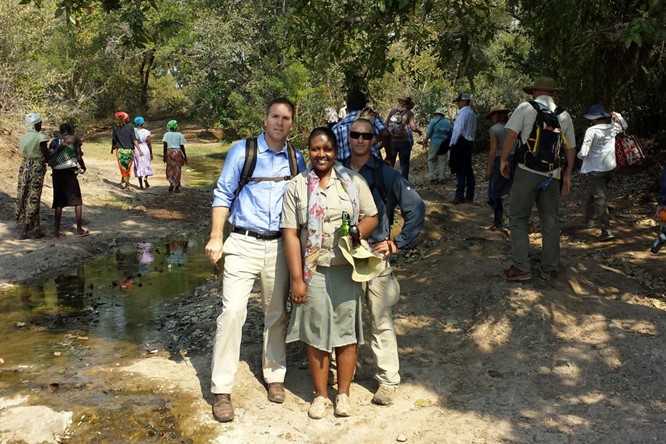
Sharing what we learn in this evolving practice of regenerative land management is crucial. As Jeff says, “Being able to train the next generation of practitioners is absolutely the right way to go to advance the practice. We see that firsthand with EWN and our collaborations with academic institutions to share information about nature-based solutions. A comment Ricardo made that really sticks in my mind is that ‘nature already has it dialed in.’ Everything that Ricardo has shared with us today echoes that message and needs to be shared with others.”
